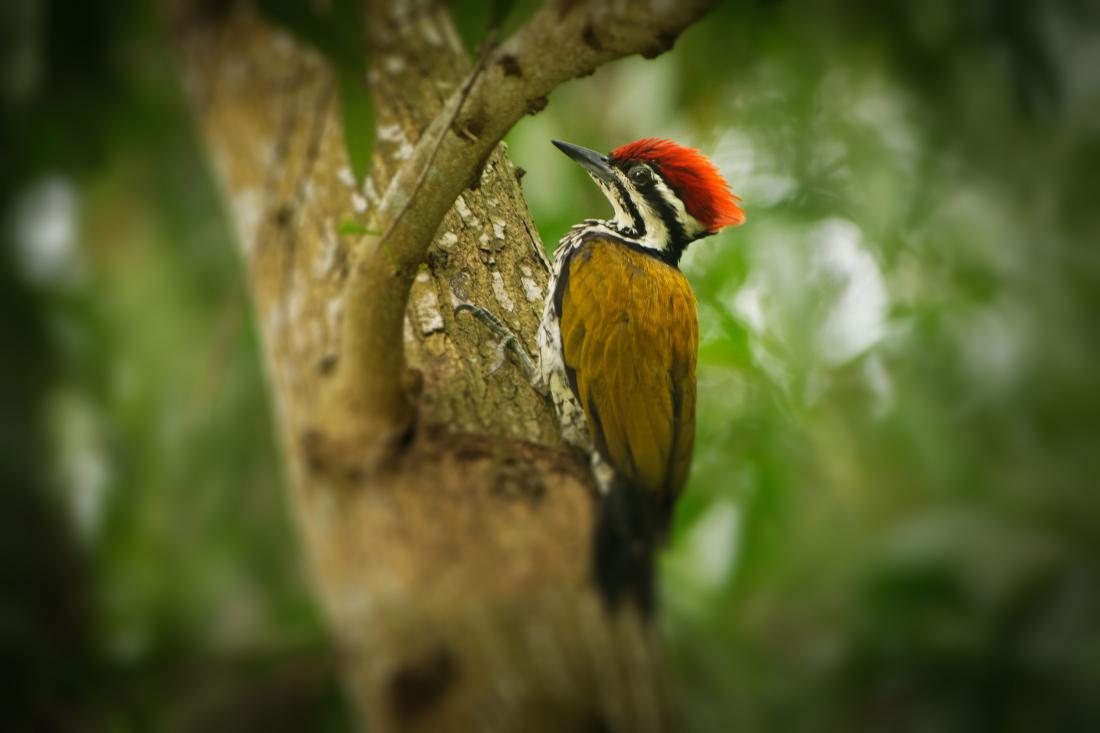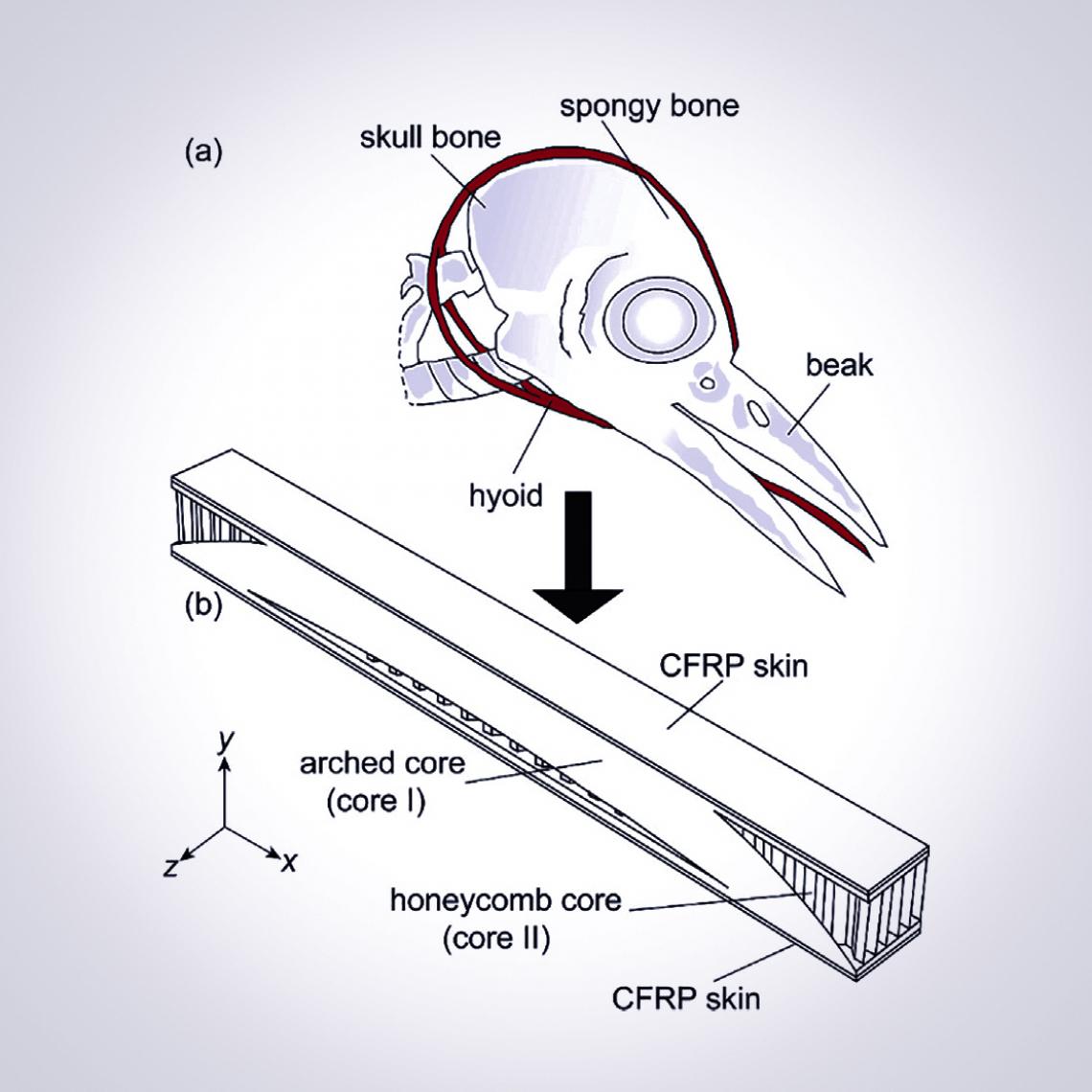This story is featured in the Asia Research News 2022 magazine. If you would like to receive regular research news, join our growing community.
Get the news in your inbox
Scientists at Universiti Malaysia Sarawak (UNIMAS) are using computational modelling to optimise the ability of composite sandwich beams to absorb strong impacts. They applied their approach to a beam design inspired by the woodpecker’s head, changing aspects of the structure to find the optimal solution. The findings were published in the journal Composite Structures.
“Sandwich beams are used in construction and the aviation and automotive industries due to their superiority over many conventional structures in terms of their enhanced energy absorption, light weight, stability, and ability to protect occupants during a crash,” says UNIMAS structural engineering lecturer, Ahmad B. H. Kueh. Such beams are made of an upper and lower skin sandwiching a lightweight inner core. Much research has been done on a variety of sandwich beam designs, involving different types and shapes of inner cores. Core designs have been geometrically inspired, employed the concepts of Japanese folding art, or have even been driven by natural designs found in the animal and plant kingdoms.
The beam's design is inspired by the ability of the woodpecker's head to protect its brain from injury.
Among these, a design inspired by the woodpecker’s head has shown promise. However, there is still much room for improvement. Kueh and his colleagues used an engineering software tool, called ABAQUS, to simulate what might happen to woodpecker-inspired sandwich beams upon impact.
They assumed a beam made with outer skins of polymer laminate reinforced with carbon fibre. The inner core was composed of two parts: a surrounding arch made of hot glue and an aluminium-based honeycomb. Experimentally-known details of the various materials, such as density, stiffness and tensile strength, were input into the software program. The researchers then tested how impact affected the beam when the hot glue arch was thinner or thicker and the width of the arch’s legs, called leg span, changed.
The simulations showed that a thin arch with a short leg span resisted impact best. The beam models with the thickest arches showed the highest contact force, damage area and energy absorption. Thinner arches were maximally stressed, but performed better due to their ability to withstand repeated blows without damage.
The team recommends further research to explore the use of stiffer and less dense materials.
Further information
Assoc Prof Dr Ahmad Kueh Beng Hong
Faculty of Engineering
Universiti Malaysia Sarawak
We welcome you to reproduce articles in Asia Research News 2022 provided appropriate credit is given to Asia Research News and the research institutions featured.






